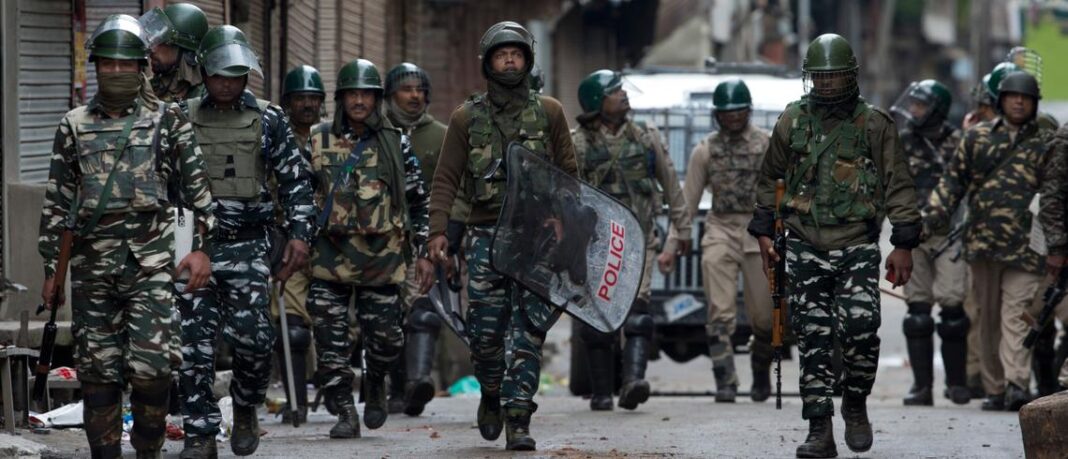By: Raja Furqan Ahmed
The Indus water is a water-distribution treaty between Pakistan and India which was held on 19th September 1960. This treaty considers being one of the most successful water-sharing attempts in the world. After the independence, the Indus along with the other rivers which include Chenab and Jhelum flows from Jammu and Kashmir and comes into Pakistan. On the other side Beas, Sutlej and Ravi have their veins from India. As Pakistan is the Agricultural state. This sector plays a central role in the economy. According to the reports, the Agriculture sector provides around 21 per cent of gross domestic product (GDP). So the agriculture sector in Pakistan depends on the flow of that river water. As compared to Pakistan, India has several rivers and water sources to support its agriculture.
The water of the Indus River mainly started from the Tibet region of China and flows through the Jammu and Kashmir region and comes into Pakistan before empty in the Arabian Sea. It is joined by the numerous tributaries. The Indus river system has been used for irrigation since the past. During the period of British rule in India, new reforms were done. The large canal system was constructed, whereas old canals were revived.
In 1947 British India was partitioned, resulting in the creation of an independent India and Pakistan. The water system was thus divided between them, the headworks in India and the canals running through Pakistan. Later on, there was a short-term Standstill Agreement of 1947, but in 1948 India began withholding water from canals that flowed into Pakistan. The Inter-Dominion Accord of May 4, 1948, required India to provide water to the Pakistani parts of the basin in return for annual payments from the government of Pakistan. In 1948 India cut off the supply in most canals that went to Pakistan but restore it later. The accord was meant to meet immediate requirements and was followed by negotiations for a more permanent solution. However, neither side was willing to compromise their respective positions. Pakistan wanted to take that matter in International Court of Justice (ICJ) but India refused this and arguing that the conflict should solve through bilateralism. The Indian government several times made promises not to intervene and would not go against the due right of Pakistan but in reality, they always moved against promises and many times threatened to cut the flow of the rivers.
In September 1950, the Indian government agreed to solve this issue through Arbitration. India also demands that there should be a court in which both members should be from each side and one neutral chairman. The proposal was accepted by Pakistan too. Later on, in 1951, David Lilienthal the former head of Tennessee valley authority (US agency to control floods, improve living standards of a farmer, navigation) and the US atomic energy commission visited the region to write a research article for Collier’s magazine. He has a keen interest in subcontinents region. He wrote that:
“No armies with bombs and shellfire could divest a land so thoroughly as Pakistan could be devastated by the simple expedient of India’s permanently shutting up the source of water that keeps the field and the people of Pakistan green”
After both states agreed, the chairman of World Bank Eugene Black took this responsibility. He made a committee of both sides to overcome this problem. In his suggestion, engineers from both countries formed a working group with the World Bank offering advice. In 1954 World Bank proposes the solution. Within six years of talks between the two arch-rivals on September 19th, 1960 an agreement was signed between Indian Prime Minister Jawaharlal Nehru and Pakistani president Ayub Khan in Karachi that is commonly known as Indus Water Treaty. In the agreement, the World Bank divided the whole reservoirs into two parts. Beas, Ravi and Sutlej (Eastern River) rivers were assigned to India while the rivers Chenab, Jhelum and Indus (western Rivers) were granted to Pakistan. The treaty also helps in financial assistance of building new dams, link canals, and barrages. Some notable work is Tarbela Dam in Indus River and Mangla dam in Jhelum River. Furthermore in the Agreement, it was also decided for the storage of water Pakistan would be helped to build dams, barrages and around seven link canals in which Indian would financially help in the scheme. while the remaining amount would be given by the World Bank, US, New Zealand, Canada, Australia, and other friendly states of Pakistan. Moreover under the treaty, all the waters of the three eastern rivers, averaging around 33 million acre-feet (MAF), were allocated to India. The waters of the western rivers (Indus, Jhelum, and Chenab) averaging to around 135 MAF, were allocated to Pakistan except for ‘specified domestic, non-consumptive and agricultural use permitted to India. India has also been given the right to generate hydroelectricity through the run of the river projects on the western rivers which is subject to specific criteria for design and operation is unrestricted.
Mostly from Indian sides threats coming due to their positive position. As the water flows from India toward Pakistan. In the 1970’s India starts building hydropower projects in the Kashmir. On the other hand, Pakistan raises concern on this project. Later on, in 1984 Pakistan objects over India building Tulbul barrage on the Jhelum and India stops it. In 2007 Pakistan raises concern over Kishan Ganga hydroelectric plant. Now it is completed. After the attack in Uri the town near in Jammu and Kashmir in 2016, India threatened to revoke the treaty. As Uri attack was one of the deadliest attacks on security forces in the Kashmir. According to the details, 19 India soldiers were killed. This issue increases the tension between both states. The Indian Prime Minister Narendra Modi gives the statement that “blood and water cannot flow together.” As this sort of statement comes from India but didn’t materialize. Later on, India decided to restart the Tulbul Project on the Jhelum River in the Kashmir Valley, which was previously suspended in response to Pakistan’s objections. After Pulwama attack 2019, the Minister of Road and Water Resources Nitin Gadkari stated that “all water presently flowing into Pakistan in the three eastern rivers will be diverted to Haryana, Punjab and Rajasthan for various uses”. India can reduce the flow of water but cannot stop. Pakistan disagrees on Kishenganga and Ratle hydroelectric power plants being built by India. Pakistan has a lot of concerns and still, now Pakistan officials meet with World Bank in the US regarding the concern. The two countries disagree over the technical design features of the two hydroelectric plants breaks the Treaty. The plants are on respectively a tributary of the Jhelum and the Chenab Rivers. The Treaty designates these two rivers as well as the Indus as the “Western Rivers” to which Pakistan has unrestricted use. Under the Treaty, India is permitted to construct hydroelectric power facilities on these rivers subject to the terms.
The construction of dams by India on Pakistani allocated rivers could lower the quantity of water in the western rivers, which really affect the access to water of the people who regularly consume the water of these rivers in Pakistan. Moreover, blocking the Indus and other rivers from India could cause a shortage of water in Pakistan, especially in Punjab region which would deprive a large number of people who are dependent on access to this river water for drinking, agricultural, and domestic needs. As numerous disputes were being peacefully settled over the years through the Permanent Indus Commission.
Kishanganga dam is located in Gurez Valley of Bandipora District; North of Srinagar Indian occupied Kashmir. It is a 330 MW power project and is expected to generate around 1,713 million units per annum by diverting water from Kishanganga River to an underground powerhouse. This project is operated by National Hydroelectric Power Corporation (NHPC) of India and will be a benefit for the several north Indian states and provide 12% of its generated power to Jammu &Kashmir. It is 37 m high concrete faced rockfill dam constructed on Kishanganga River in Jhelum River basin in Bandipore in Jammu and Kashmir. Its construction was started in 2007 and completed in 2016. Against this Pakistani Government raises the concern. Pakistan believed that India was not permitted under the Indus Waters Treaty to divert waters from one tributary to another. Pakistan believes that Kishan Ganga dam project is against Pakistan and it will decrease the flow of water. Kishanganga dam name in India whereas in Pakistan the river is called Neelum River. Pakistan contact with the International Court of Arbitration regarding the Kishan Ganga project. 20 December 2013 International court of arbitration gives decision in favoured of India. As India was allowed to build a dam but India has to make sure that the flow of water should not be decreased.
The COA ruled that India shall not lower down the water level below the dead storage level for sediment flushing purpose. COA also stipulated in its verdict that India shall maintain minimum environmental flows in the Kishanganga River at the line of control point not be less than 9 cumecs continuously. However, the minor differences between India and Pakistan over the project are still not settled.
As India again plan to fully use its share of water without violating the long-standing treaty. India has started work in the states like in Haryana, Punjab and Rajasthan instead of letting flow unused into Pakistan. As India believes that accounting to their share India used around 93 per cent so for saving their 7 per cent water which flows toward Pakistan they are building dams and hydropower projects.
Indus water treaty which was held in 20 century is one of the successful treaties in the globe. This treaty is ratified and binding. Ups and downs come between both states as fighting wars and still, they have a major conflict which is Kashmir. Both states should cooperate with each other and conflict should be minimized. As some historian claims that the next war will be fought for water.
The writer is a freelance journalist based in Islamabad, Pakistan. He tweets @furqanraja1122








